| Umělec magazine 2001/1 >> The Realistic Obsessions of a Recluse | List of all editions. | ||||||||||||
|
|||||||||||||
The Realistic Obsessions of a RecluseUmělec magazine 2001/101.01.2001 Lenka Lindaurová | profile | en cs |
|||||||||||||
|
"Most Czechs are familiar with the ironic drawings that depict on the cover of Respekt the less-than-encouraging phenomena of our post-totalitarian society. This political and cultural weekly was originally the samizdat publication Informační Servis whose contributors included the current politician and Senator Jiří Ruml. Pavel Reisenauer, an artist of brilliant style, is the man behind the tens of thousands of drawings published there over the past eleven years.
As far as general knowledge goes, Reisenauer only took part in two regular exhibitions in the 1990s. And even then he was only there to complement the themes young visual artists were concerned with. Two years ago, the commercial space Gallery was supposed to put together a solo exhibition, but it never happened. Gallery is mainly known for putting on such blockbuster shows as Josef Lada and was counting on Reisenauer’s media image. His cartoons/illustrations are accurate, poignant and apparently comprehensible. In meaning they could be considered caricatures, but formally they represent realistic and even academically masterful drawings. To this day, however, the art community continues to recognize him only as a cartoonist and his more formal work remains almost unknown. An Anti-media Weirdo A big exhibition, any exhibition, in fact, would be appropriate for his exceptional format and would elevate Reisenauer to the status of a national hero, but would probably not do his work any favors. He is one of the few painters who separates his work into two spheres: one pays the bills (always remembering that not many are fortunate enough to have such a pleasant job), the other is for his enjoyment. In his work he doesn’t have to think even for a moment about the art “industry,” and he can fully engage himself in his art, which he thinks about in idealistic terms: “I’m trying to chuck out all the idiocies and jokes.” Reisenauer winds up somewhere outside conceptual painting, outside realistic work, in romantic meanderings of unconscious creative passion. He resolutely rejects fame, immortality, popularity and criticism. Because he paints popular scenes such as spontaneous intercourse in front of the main train station, breast feeding, oral sex and genital shaving, he stands out as a genuine recluse and loner. He will one day become a ragingly bitter old man who will not let anyone get close to him and whose work will become his personal consolation (deviation?). Perhaps it is this position that protects him from the general skepticism concerning contemporary art’s ability to express something meaningful, skepticism coming from a certain superficiality and marginality of the artistic language. Understanding Reisenauer’s work outside the context of Respekt poses the biggest challenge for a viewer. His position as an illustrator and intelligent commentator is as stigmatizing as Woody Allen’s self-imposed role in film. Just as it is hard to imagine that intellectual addict of psychoanalysis as the primitive, tasteless thief that he played in his latest film, each new role Pavel Reisenauer assumes is seen as part of a kind of cliché. Thus does a kind of absurd grotesque take shape, informed somewhat by the stereotypical Czech characteristics of Švejk, Kafka and so on. From an Alien’s Photo Album His smaller format paintings are mostly figurative and narrative. At the beginning of the 1990s they often contained writing which made reference to certain illustrations or mini advertisements. The message was more tragicomic than deep. But Reisenauer did not renounce image symbolism. An extensive series of paintings he made about three years ago took a solid step out of the prison of the textual story and are something like photographic snapshots that capture a foolish, out-of-time Czech world. This black and white photo album made with paste-like oil includes Papa Masaryk, a scene from the Slovak national uprising, the Beatles tripping over a pedestrian crossing, UFOs landing, a swan and the Czech children’s character Ferda the Ant. Working such a long time for a black and white weekly is not the reason for his minimal use of color. His intention is to express something through a medium without personal engagement, as in press agency illustrations. Only one theorist has taken notice of the inter-medial nature of his work, something that especially disturbs art historians. “Reisenauer negates and supports painting at the same time. It is neither painting nor photography. A sloppy, amateurish style, black and white creating a consistently gray scale and often made-up motifs, nothing more. Yet he creates an illusion of authentic reality, something photography or a hyper-realistic portrayal could hardly achieve...” (Pavla Pečinková: What Rei Stands For, Umění a řemesla issue 3/00). Reisenauer’s newspaper caricatures, paradoxically technically perfect, almost in the style of Max Švabinský, openly admit their purpose. The realistic drawings contain comic-style voice bubbles, and with only a superficial reading, the whole scene manages to document the emptiness of contemporary political rhetoric. Reisenauer has no respect for anyone or anything, but he uses vulgarisms marginally, only in the background, in the third dimension of the drawing. He applies in his paintings what he learned from journalism, which includes his technical precision. (Since 1994 he’s used only a computer for his magazine work.) His titles often emphasize his desire for the ironic commentary that is inherent in the subtext: The Dawn of Magicians is a painting of a flying saucer in a deserted landscape. Other times a message is contained in the selection of unambiguously understood symbols: the Beatles, say, or a specific scene from a well-known film by Voskovec and Werich. Death After Life and Life Now Preceding this peculiar style of gray paintings was another strange work that cannot be compared to newspaper caricatures or book illustrations (a number of writers and publishers asked Reisenauer to illustrate their books at the end of the 1990s). Drawn with a light hand, the graphic novel Death After Life uses an unusual format and represents his most cryptic work to date. The breakneck story that takes place after the main character’s death is a fine weave of philosophical and biblical sentences that intertwine with coarse parallels in the most idiotic ways, almost as if Reisenauer himself had experienced clinical death and decided to reveal its cruel truth. Death After Life is perhaps a key moment in Reisenauer’s work because in his later life he no longer has to play with immortality. His latest work is a part of his gray series, represented most characteristically by the UFO cycle, without narrative and, for the time being, completely non-figurative. Miniature hardwood boards are covered with an extremely glossy, painted layer of oil, with scenes portraying kitschy rock landscapes. He no longer balances emotionally the media scales of reality and photography, rather he reaches somewhere into the depths of the unconscious, where the strangest obsessions visualize themselves. But it seems inappropriate to give such a perverse label to works by an artist who has so radically calmed down in his painting. Unless he really knows what it looks like behind the fateful wall. Translated by Vladan Šír Pavel Reisenauer Reisenauer (b. 1961) completed secondary education. Since 1991, he has worked as an illustrator at Respekt. Exhibitions: Staré Hrady, 1988; Gallery K, Prague, 1990; Ženské domovy, Prague, 1992; Václav Špála Gallery, Prague, 1995; Train Station, Prague, 1995; Seven Years of Respekt, Archa Theater, Prague, 1997; Richter Villa, Prague, 1997 Book Illustrations: Petr Placák, Medorek, Lidové noviny, 1991 Egon Bondy: Gottschalk, Krates, Jao Li, special edition, 1991 Lois Dribin: Dobrá chuť, Radost, 1993 Egon Bondy: Hatto, special edition, 1995 Pavel Reisenauer: Death After Life, Divus, 1995 Minulý týden, Respekt, 1996 Woody Allen: Vedlejší účinky, Argo, 1996 Arthur Bloch: Murphyho zákon, Argo, 1998 Arthur Bloch: Murphyho zákon 2000, Argo, 1999 Jeden svět, (Člověk v tísni), Argo, 1999 Magda Vašáryová: Diskrétní průvodce, Pragma, 1999 Michal Viewegh: Nové nápady laskavého čtenáře, Petrov, 2000 Petr Jarchovský: Musíme si pomáhat, Paseka, 2000 Michal Horáček: Los a sázka, Fortuna, 2000 Viktor Šlajchrt: Suroviny laskominy, Millenium Publishing, 2000 Petr Placák: Cestou za dobrodružstvím, Babylon, 2001 Book Covers: Richard S. Prather: Zítra mě sejmou, Paseka, 1994 Charles Bukowski: Poštovní úřad, Pragma, 1996 Douglas Adams: Holistická detektivní kancelář Dirka Gentlyho, Argo, 1997 Maxim Biller: Harlem Holocaust, KiWi, 1998 Leon de Winter: Hoffmanův hlad, Rybka Publishing, 2000 Arthur Bloch: Murphyho zákon a lékaři, Argo, 2000 Thomas van Trolleybus: Murphy cestuje, Argo, 2000 "
01.01.2001
Recommended articles
|
|||||||||||||
|
04.02.2020 10:17
Letošní 50. ročník Art Basel přilákal celkem 93 000 návštěvníků a sběratelů z 80 zemí světa. 290 prémiových galerií představilo umělecká díla od počátku 20. století až po současnost. Hlavní sektor přehlídky, tradičně v prvním patře výstavního prostoru, představil 232 předních galerií z celého světa nabízející umění nejvyšší kvality. Veletrh ukázal vzestupný trend prodeje prostřednictvím galerií jak soukromým sbírkám, tak i institucím. Kromě hlavního veletrhu stály za návštěvu i ty přidružené: Volta, Liste a Photo Basel, k tomu doprovodné programy a výstavy v místních institucích, které kvalitou daleko přesahují hranice města tj. Kunsthalle Basel, Kunstmuseum, Tinguely muzeum nebo Fondation Beyeler.
|







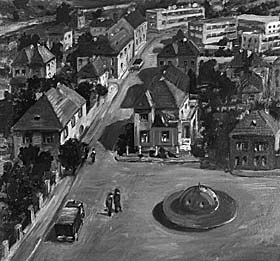

















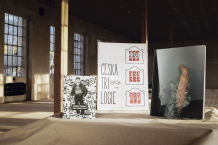




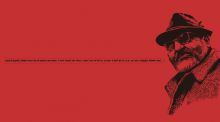
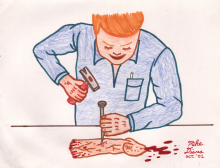
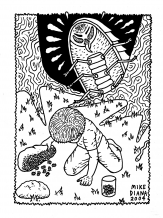
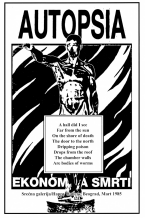


 We Are Rising National Gallery For You! Go to Kyjov by Krásná Lípa no.37.
We Are Rising National Gallery For You! Go to Kyjov by Krásná Lípa no.37.
Comments
There are currently no comments.Add new comment